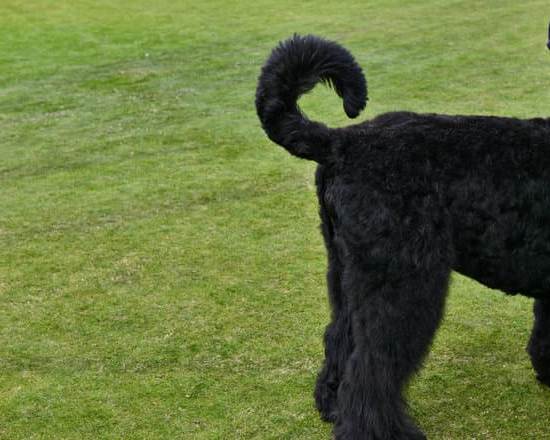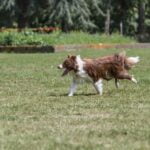Are you struggling with the challenge of how to train your dog not to chase chickens? Many dog owners find themselves in this predicament, dealing with the natural instinct of their canine companions to go after small animals. In this article, we will delve into the intricacies of understanding the root cause of this behavior and provide you with practical tips and techniques to effectively train your dog.
First and foremost, it’s important to comprehend why dogs have a tendency to chase chickens. Understanding the instinctual drive behind this behavior is crucial in formulating an effective training plan. By delving into the psychology of your dog’s predatory instincts, you can gain valuable insights into how to redirect and modify their behavior.
Once we have established a solid foundation in understanding the instinct, we will then move on to assessing the situation. This involves identifying specific triggers and behaviors exhibited by your dog when in the presence of chickens. By honing in on these key factors, you can tailor your training approach to address your dog’s individual tendencies and reactions.
In addition, building a strong bond and trust with your dog plays a pivotal role in shaping their behavior around chickens. We will explore the importance of positive reinforcement, consistency, redirection, training techniques, supervision, and management as essential components in successfully training your dog not to chase chickens. With patience and persistence, both you and your furry friend can overcome this challenge together.
Assessing the Situation
Understanding the specific triggers and behaviors of your dog is crucial in addressing and preventing chicken chasing. By identifying these triggers, you can tailor your training approach to effectively address your dog’s behavior. Here are some steps to help you assess the situation:
- Observe your dog’s behavior around chickens: Take note of when and how your dog exhibits chasing behavior. Is it triggered by movement, noise, or the sight of a chicken?
- Identify any previous experiences: Consider if your dog has had any past encounters with chickens that may have contributed to its chasing behavior.
- Assess your dog’s body language: Understanding your dog’s body language can provide insight into its state of mind when around chickens. Look for signs of excitement, agitation, or anxiety.
Once you have a better understanding of your dog’s triggers and behaviors, you can create a targeted training plan to address the root cause of the chasing behavior. This may involve using specific techniques and tools to modify your dog’s response to chickens and reframe its perception of them through positive reinforcement and redirection. Remember that every dog is unique, so it’s essential to tailor your approach based on your individual pet.
Building a Solid Foundation
Building a strong bond and trust with your dog is an essential first step in training them not to chase chickens. By creating a strong foundation of trust and respect, you can better communicate with your dog and address any behavioral issues, including chasing behaviors.
To establish a solid foundation with your dog, consider the following:
- Spend quality time with your dog: Engage in playtime, walks, and other activities that allow you to bond with your pup.
- Provide basic obedience training: Teach your dog commands such as “sit,” “stay,” and “come,” which will help establish your role as their leader.
- Use positive reinforcement: Reward good behaviors with treats, praise, and affection to create a positive association between you and your dog.
- Be consistent in your interactions: Set clear boundaries and rules for your dog to follow, ensuring they understand what behavior is expected from them.
Establishing a strong bond with your dog can also help build their confidence, making them less likely to engage in chasing behaviors. When your dog feels secure and connected to you, they are more likely to look to you for guidance in various situations, including encounters with chickens. Building this trust will not only improve their behavior but also strengthen the relationship between you and your furry companion.
The Power of Positive Reinforcement
When it comes to training your dog not to chase chickens, positive reinforcement is a powerful tool. Dogs respond well to rewards and praise, and this can be used to encourage good behavior. By rewarding your dog for the behavior you want to see, such as ignoring the chickens or responding to your commands, you can effectively communicate what is expected of them.
One of the most effective forms of positive reinforcement is using treats. When your dog exhibits the desired behavior, such as staying calm around the chickens, immediately reward them with a small treat. This positive association will help them understand that good things happen when they behave appropriately.
In addition to treats, verbal praise and physical affection can also be used as forms of positive reinforcement. When your dog listens to your commands or shows restraint around the chickens, lavish them with praise and affection. This will strengthen the bond between you and your dog while reinforcing the desired behavior.
| Positive Reinforcement Technique | Example |
|---|---|
| Using treats | Rewarding your dog with a treat when they ignore the chickens |
| Verbal praise | Lavishing your dog with verbal praise when they respond to your commands |
| Physical affection | Giving your dog a belly rub or scratches behind the ears when they show restraint around the chickens |
Consistency Is Key
Setting Clear Rules and Boundaries
When it comes to training your dog not to chase chickens, consistency is crucial. This means setting clear rules and boundaries for your dog and sticking to them at all times. For example, if you don’t want your dog to chase chickens, then you must never allow them to do so, even just once. Inconsistency in enforcing the rules will only confuse your dog and make the training process much more challenging.
Establishing a Routine
In order to effectively train your dog not to chase chickens, it’s important to establish a structured training plan and stick to a routine. This includes setting aside dedicated time each day for training exercises that focus on obedience, impulse control, and redirection. By following a consistent schedule, your dog will learn what is expected of them and will be more likely to exhibit the desired behavior.
Reinforcing Good Behavior
Consistency also extends to how you reinforce good behavior in your dog. Whenever your dog exhibits the desired behavior, such as ignoring the chickens or turning their attention back to you when prompted, be sure to reward them with praise, treats, or playtime. Consistently rewarding positive behavior will help reinforce the lesson and encourage your dog to continue exhibiting good behavior when faced with temptations like chasing chickens.
The Art of Redirection
Dogs have a natural prey drive that is rooted in their predatory instincts. This instinct can be triggered by small animals, fast movements, or even just the thrill of the chase. For many dogs, chickens are an irresistible target. Understanding this instinct is crucial to effectively training your dog not to chase chickens. By recognizing the underlying cause of this behavior, you can tailor your training approach to address it in a meaningful way.
Assessing the Situation: Identifying the Specific Triggers and Behaviors of Your Dog
Before you can begin training your dog not to chase chickens, it’s important to evaluate their behavior and identify specific triggers that set off their chasing instincts. Observe how they react when they see a chicken, take note of any behaviors or body language changes, and consider any patterns or situations that seem to provoke their chasing behavior.
By understanding what sets off your dog’s desire to chase chickens, you can develop a more targeted and effective training plan.
Building a Solid Foundation: Establishing a Strong Bond and Trust With Your Dog
Training your dog not to chase chickens ultimately hinges on building a strong foundation of trust and obedience. By establishing yourself as a trustworthy leader and building a positive relationship with your dog, you can create a solid groundwork for successful training.
Focus on strengthening basic commands such as “sit,” “stay,” and “come,” which will form the basis for more advanced training techniques aimed at preventing chasing behavior. Additionally, incorporating regular exercise, mental stimulation, and positive interactions will help foster a sense of security and contentment in your dog, reducing their inclination to engage in unwanted behaviors like chasing chickens.
| Training Techniques | Description |
|---|---|
| Establishing Trust | Focus on strengthening basic commands such as sit, stay, and come. |
| Positive Interactions | Incorporate regular exercise, mental stimulation, and positive interactions to reduce the inclination to engage in unwanted behaviors. |
Training Techniques and Tools
Understanding the Use of Training Aids
When it comes to training a dog not to chase chickens, there are various training aids that can be used to deter this behavior. One common tool is a long line or leash, which allows you to have control over your dog’s movements during training sessions.
This can be especially useful when teaching your dog to focus on you and ignore the chickens. Additionally, there are also tools such as deterrent sprays or noise devices that can be effective in redirecting your dog’s attention away from the chickens.
Positive Reinforcement Methods
Incorporating positive reinforcement methods into your training plan can also be highly effective in deterring chasing behavior. When your dog displays good behavior, such as ignoring the chickens or responding to your commands, be sure to reward them with treats, praise, and affection.
This helps to reinforce the desired behavior and encourages your dog to continue behaving in a manner that aligns with your expectations. Positive reinforcement creates a strong association between good behavior and positive outcomes, ultimately helping to diminish the desire to chase chickens.
Professional Training Assistance
For some pet owners, seeking professional assistance from a certified dog trainer may be beneficial when dealing with chasing behavior. A professional trainer can provide personalized guidance and develop a customized training plan suited specifically for your dog’s needs.
They may also recommend specialized training aids or techniques based on their expertise and experience in addressing similar behavioral issues. If you find yourself struggling to make progress with deterring chasing behavior on your own, consulting with a professional trainer could provide valuable insights and support for both you and your dog’s training journey.
Supervision and Management
Even when you’re not actively training your dog, it’s important to implement strategies to prevent chasing behavior. One effective method is to use barriers or fences to keep your dog away from the chicken coop or areas where the chickens roam freely. This physical barrier can help deter your dog from even attempting to chase the chickens when you’re not around to supervise.
Additionally, using a leash or a long line can also be helpful in managing your dog’s behavior. By keeping your dog on a leash or long line when they are outside, you can easily control their movements and prevent them from chasing chickens. This allows you to gradually give them more freedom as they show progress in their training and demonstrate that they can resist the instinct to chase.
Another important aspect of supervision and management is creating a safe and controlled environment for your dog. This may involve setting up designated play areas or exercise areas for your dog that are separate from where the chickens are located. By providing structured and supervised activities for your dog, you can help prevent any opportunities for them to engage in chasing behavior. Always remember that consistency is key in reinforcing good behavior and preventing unwanted behavior in your dog.
Patience and Persistence
In conclusion, training a dog not to chase chickens requires patience and persistence. It is important to understand that this process takes time and commitment from both you and your furry friend. By recognizing the instinctual nature of dogs to chase chickens, assessing the specific triggers and behaviors of your dog, and building a solid foundation of trust, you can begin the journey of training with a positive mindset.
Positive reinforcement plays a crucial role in encouraging good behavior. Rewarding your dog with treats and praise when they exhibit self-control around the chickens can help reinforce the desired behavior. Consistency is key in implementing a structured training plan and sticking to it. By consistently redirecting your dog’s focus from the chickens to you, you can gradually teach them to resist the urge to chase.
Utilizing training aids and methods can also be beneficial in deterring chasing behavior. This may include using leashes or fences to prevent access to the chickens, as well as seeking guidance from professional trainers if needed. Lastly, supervision and management are essential in preventing chasing when you’re not actively training your dog. With patience, persistence, and dedication, you can work towards successfully training your dog not to chase chickens.
Frequently Asked Questions
How Do I Stop My Dog From Chasing Chickens?
To stop your dog from chasing chickens, you need to address the behavior through training. Start by supervising your dog around the chickens and correcting any attempts to chase them. Use positive reinforcement when your dog ignores the chickens or follows a command to leave them alone. Consistency is key, so make sure to practice these training sessions regularly.
Is It Normal for Dogs to Chase Chickens?
It is normal for dogs to chase chickens, as it falls under their natural predatory instincts. However, it is not acceptable behavior, especially if you have chickens on your property or live in an area with them. With proper training and supervision, you can teach your dog to leave the chickens alone and coexist peacefully with them.
How Do I Train My Dog to Leave Chickens Alone?
Training your dog to leave chickens alone requires patience and consistency. Start by teaching basic commands such as “leave it” or “stay” and use these commands when around the chickens.
Gradually increase the level of distraction during training sessions so that your dog learns to ignore the chickens even in more tempting situations. Additionally, always reward good behavior with praise or treats to reinforce the desired response.

Welcome to the blog! I am a professional dog trainer and have been working with dogs for many years. In this blog, I will be discussing various topics related to dog training, including tips, tricks, and advice. I hope you find this information helpful and informative. Thanks for reading!





